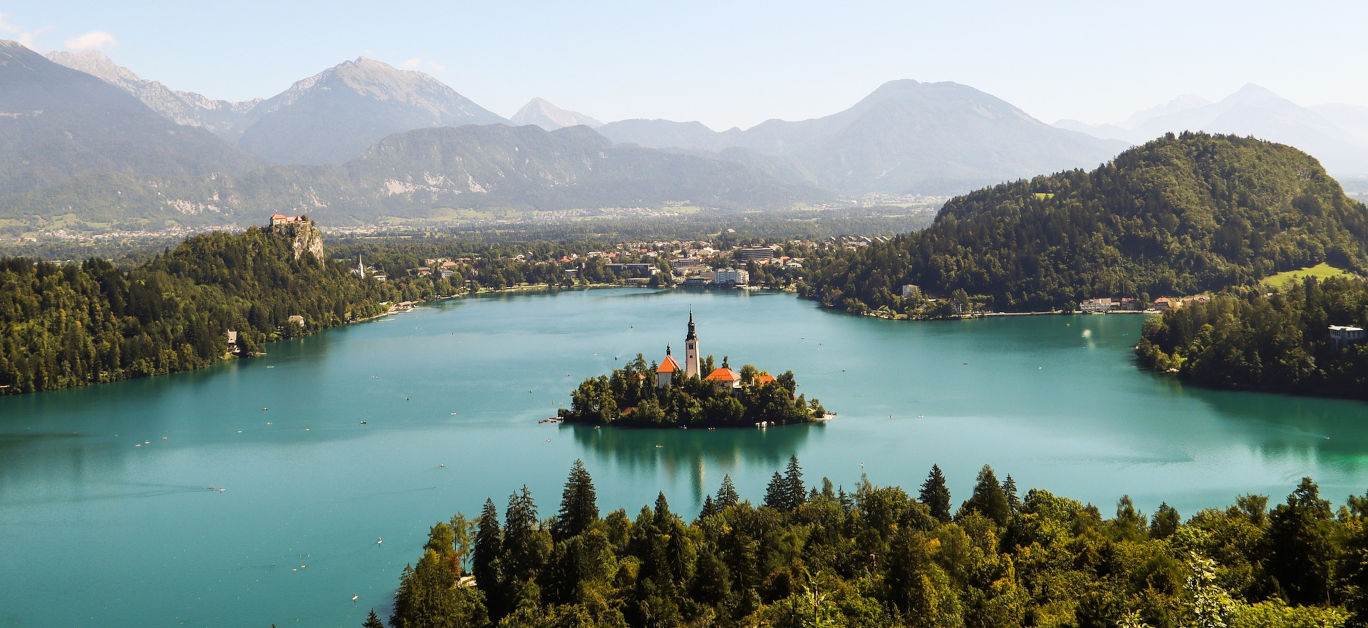As the sun sets on the Julian Alps, it casts beautiful colours on the pea-green Lake Bled, one of Slovenia’s most iconic locations. This beautiful background was the stage for a very special VIP basketball tournament held to mark the launch of the new Jordan basketball sneakers in association with Luka Dončić, Slovenia’s biggest basketball star who now plays for the Dallas Mavericks.
Bordering Austria, Hungary, Italy and Croatia, Slovenia is blessed with the perfect landscape for getting fit and healthy outdoors, it has the aforementioned Julian Alps, a Mediterranean coastline, the rugged Karst region and the expansive Pannonian Plain, and the mighty Mount Triglav is the national symbol, making it the perfect breeding ground for world-class athletes.
The Juliana trail is famous for mountaineers and hikers. There are also four large ski resorts in Slovenia, and the nation produced Bojan Krizaj considered the nation’s most famous skier of all time, and Tina Maze among others. Being so close to the Alps, it is also the location of the Elan Ski Museum and Elan Ski Factory, which produces the world-class skis that have changed the history of skiing and shaped the fortunes of many a global alpine skiing champion.
Slovenia is a sporting nation that regularly tops the table when it comes to winning Olympic medals, and sporting success is ingrained in the DNA of its people. From skiing, mountaineering, cycling, and rowing, there are many success stories, but basketball is one of its favourite national sports. Pure passion for the sport shines in the faces of youngsters who practice dribbling the ball in the capital city of Ljubljana. This is the hometown and former stomping ground of MBA basketball player Luka Dončić, who once shot hoops here. He is considered one of the greatest European basketball players of all time and has inspired an entire nation of enthusiasts who all came out to see his new sneaker launch and the MBA tournament.
The nation’s rich basketball heritage was the reason for this most unique trip to Slovenia providing top-notch VIP entertainment at this world-class sporting event but also much more. The trip provided a fascinating insight into the country and its culture, as well as fabulous a chance to experience delicious food and drink in this Alpine location during the summer. It was a once in a lifetime experience.
Stay in Ljubljana
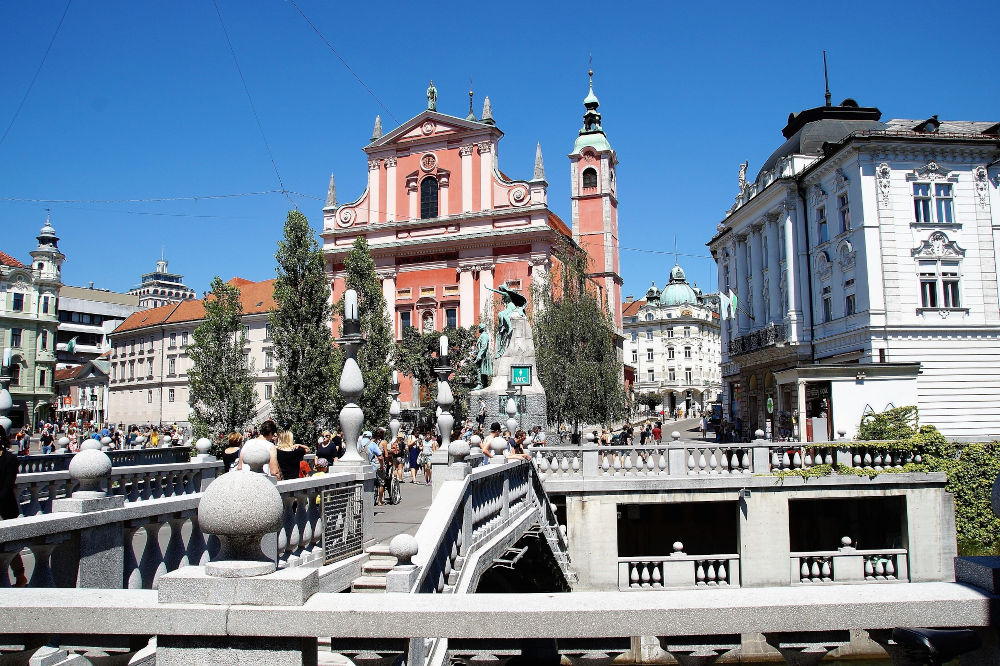
I was invited to be one of the first guests to stay at the new Occidental Hotel in town and given the royal treatment by the staff. The hotel is in a central location, overlooking the castle and the city’s historical heart and it is close to all the shops, too. The Occidental is a Spanish chain, that blends modernity with the traditional. It has a welcoming lobby and delicious coffee served with golden spoons, and the check-in process is seamless, even in the early hours of the morning. I caught the night flight to Zagreb in Croatia but then took a taxi to the capital of neighbouring Slovenia so was glad to get a good night’s sleep in the state-of-the-art rooms that feature wonderful artwork and spacious views of the castle and the city.
Not only are the rooms contemporary, with huge comfy beds and wide windows, but they also feature inviting patio areas with huge window doors that let in light. The rooms look even bigger as there are plenty of mirrors to reflect the light and they open out to a rooftop terrace, which offers a wonderful place to relax. Or you are welcome to just lie on your comfy bed with the patio doors open and invite the outside in. After a good night’s sleep, you can be sure of a good breakfast with plenty of choice from sausages and eggs to fruit and a variety of cereals to get your day off to a flying start.
After breakfast I took a stroll down to the river to enjoy the street culture and sat watching people pass by as I sipped my coffee. I took the opportunity to browse the boutiques and international stores and picked up some trainers that would see me through the trip. This worked up an appetite for lunch, where I met my colleagues, a friendly mix of Dutch, Hungarian and Belgian journalists as well as our Slovenian hosts and myself as the honorary Brit.
Every Friday, the open market in Ljubljana is buzzing with energy. People spill out of their offices and head to the square down by the river for street food. From Argentine steak to Spanish Paella, Korean Poke bowls to giant Italian pizzas, there is so much on offer.
The castle on the hill, legend says, is home to a dragon. Slovenian folklore and universal legend combine with links to Jason and the Argonauts and St George who famously slayed the dragon. The Ljubljana dragon symbolises courage, grandeur and power and is an emblem of the city appearing majestically on the Dragon Bridge and being adopted on important buildings and documents. Triple Bridge connects the Ljubljanica river and provides underground walkways and bars.
Delve into Slovenia’s past
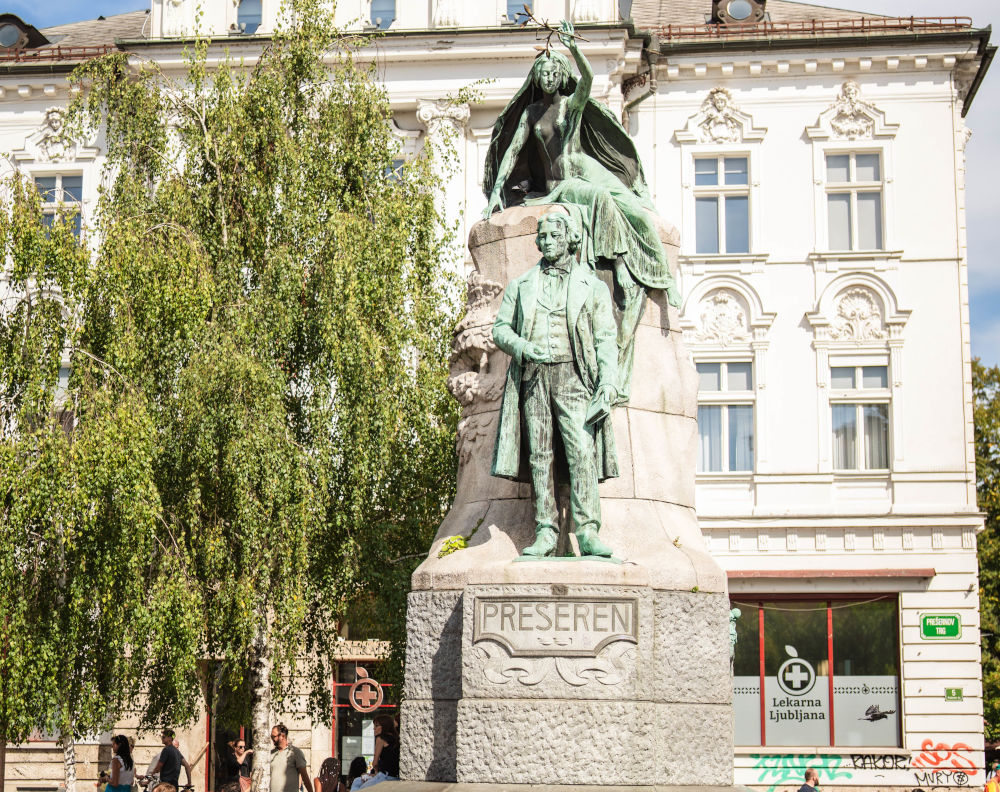
As you walk around this rich capital it is hard to imagine that, in living memory, there were once tensions between neighbours, since today all the nations exist harmoniously. Slovenia is a proud and independent country and has a long and rich history but faced many struggles, which accounts for the resilience of the people, although they are very sweet and welcoming.
Before the First World War in 1914, the Austro-Hungarian Empire comprised Austria, Hungary, Bosnia and Herzegovina, Croatia, Slovakia, Slovenia, the Free State of Fiume, and parts of modern-day Poland, Ukraine, Italy, Serbia, Romania, Montenegro and the Czech Republic. But then it was invaded by the axis powers of Germany in 1941 during the Second World War and renamed Yugoslavia in 1945, a socialist state under President Tito who ruled six republics including Slovenia Croatia, Montenegro, Serbia, Slovenia, Bosnia and Herzegovina, and Macedonia.
After Tito’s death in 1980, tensions re-emerged and with it calls for more autonomy within Yugoslavia by nationalist groups led in 1991 to declarations of independence in Croatia and Slovenia. A 10-day war broke out from 27 June 1991 until 7 July 1991, when the Brioni Accords were signed. Slovenia gained its independence from Yugoslavia. Slovenia and Croatia were the first to break away, but then there was a renewed conflict with Serbia which led to hundreds of thousands of refugees. By 1992 a further conflict had broken out in Bosnia, which had also declared independence and lasted until 14 December 1995 when the Dayton Accords were signed, so the wars are still in the living memory of many people.
Religion still plays a big part in the culture of this Catholic country and there are many churches strewn across the city including the Baroque Ljubljana Cathedral, named after Saint Nicholas. There is also a statue in reference to Slovenia’s celebrated national poet and literary canon France Prešeren, who wrote the Slovenian national anthem and many important works of literature.
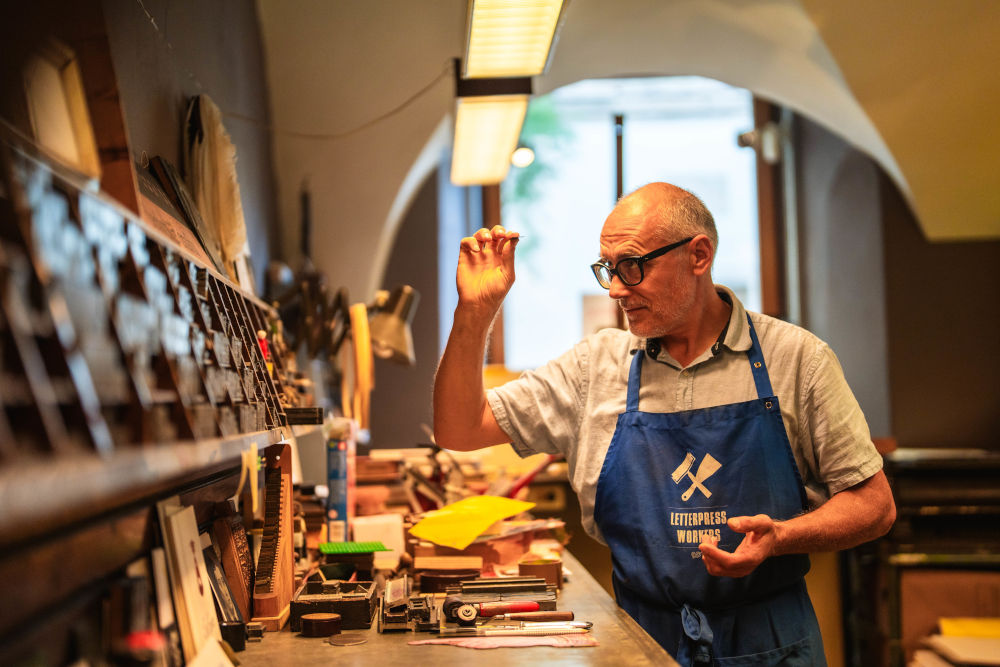
For a fascinating glimpse into the past, visitors to the city can visit a very special print shop that still uses some of the original print-making materials of the era, which the owner rescued from a factory and set up his own shop. You can immerse yourself in this creative handicraft workshop to become a printmaker for a day and explore 500 years of printing history using wooden letters. These are very special as many were dismantled and melted down during the Soviet era because there were no private printers and currency was not available. Printmakers would have to have special permission to print, and a lot of the ancient art was lost.
However, one man, Marko Drpić from studio tipoRenesansa is keeping it alive. As you step into his fascinating shop you are transported back in time to the days of the printed press. The smell of paper and ink is very familiar and comforting and there are wonderful prints all around and a fabulous printing press and wooden blocks and letter fonts. He acquired the tools back in 1999 and stored them in his barn until he could open his own print shop. When he was offered a space in the city, he found a tribe of other passionate print artists who came together to form creative art.
His passion for the printed page is infectious and it is his life’s work, he even sold his house to fund his business and it is one of those very special experiences. As a print journalist myself who has a penchant for the printed press and a romantic nostalgia for ink and paper, I was in for a treat when it transpired that we were going to do our own print to take home with us, it was a very special moment.
Exploring Lake Bled
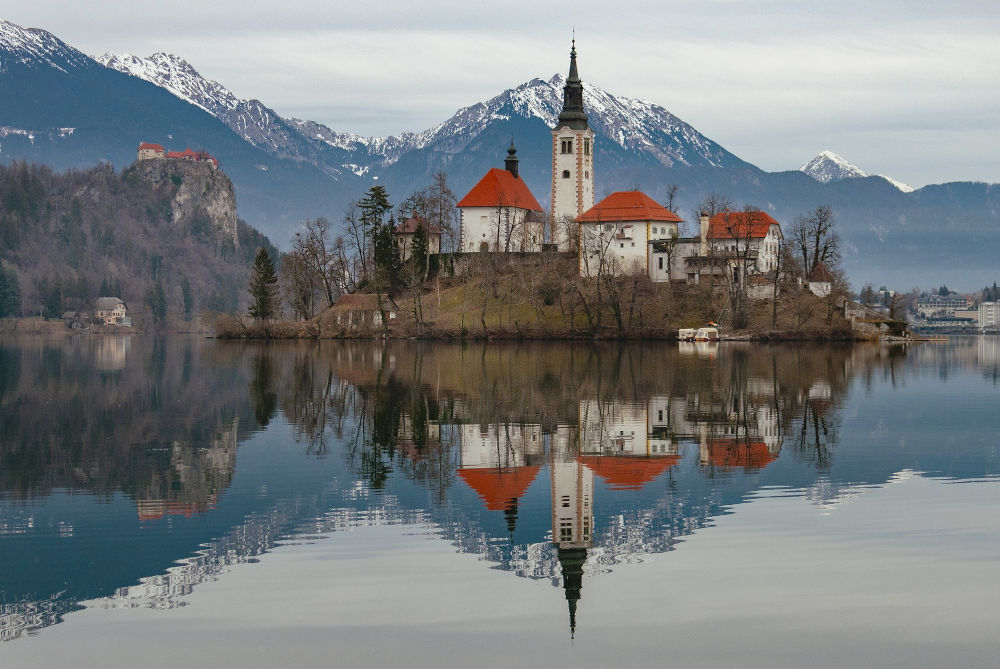
After our amazing experience, it was into the people carrier for a trip down the road to the Slovenian countryside and the enigmatic town of Bled. If you are looking for a dramatic location, Lake Bled has it all, stunning scenery, an ancient castle and a holy island surrounded by rock bars and even the Devil’s café. Bled was first mentioned in 1004, when it was awarded by Emperor Henry II to Bishop Albuin I of Brixen.
In 1274, Bled fell under the Habsburgs, lasting until 1919, except for a stint between 1809 and 1816 as one of the Napoleonic Illyrian Provinces. After the dissolution of Austria-Hungary in 1918, Bled came under the rule of the Kingdom of Yugoslavia and became a summer domicile of the ruling House of Karađorđević, a tradition that President Josip Broz Tito continued when he built his residence here in 1947.
Bled became known to tourists due to a man called Arnold Rikli who shaped the town from a farming community into a health tourism destination in the 19th Century. He was a Swiss naturopath who pioneered atmospheric healing. He installed baths, walking and hiking paths plus he built a wooden house and baths in Swiss style and a hospital with his own examination office.
When word spread about Rikli’s activities, a larger swimming area was constructed in 1899 attracting tourists who wanted to spend their holidays in a healthy and clean environment and it became renowned as one of the best tourist destinations in the Austro-Hungarian Empire. They spent money in the area and more farmers began to build accommodation and so the tourism industry grew to the international success story it is today.
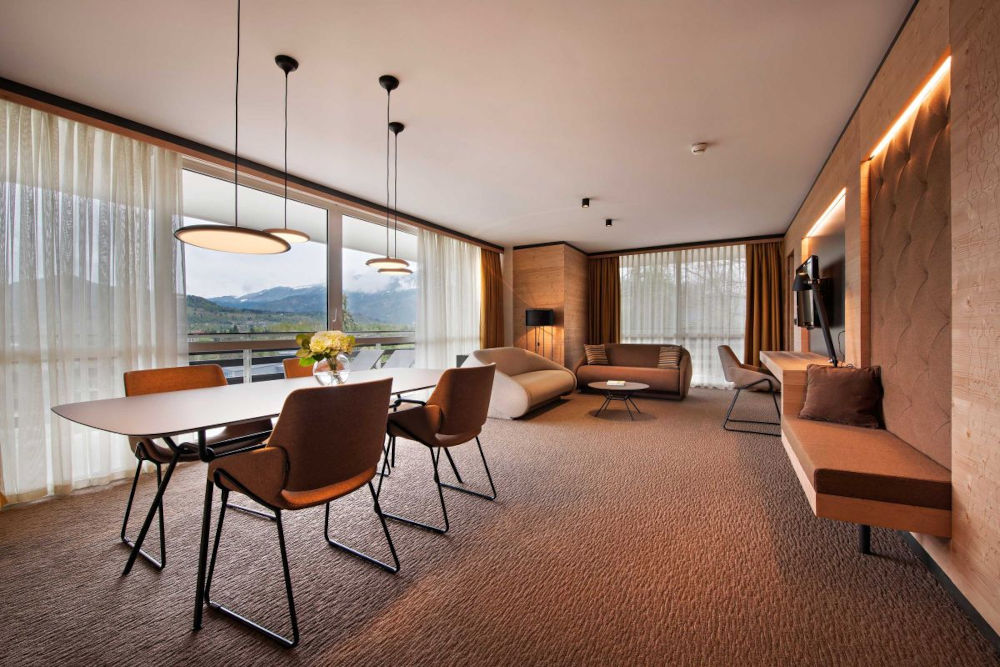
We stayed at the Rikli Balance Hotel which bears his name, and from the moment you walk into the pine lobby you are greeted with healing aromas. According to local legend, the spruce trees absorb disease from an ill person, and it has a real calming energy all around. In terms of wellness, there’s a network of calming pools and a hot tub for guests’ exclusive use as well as a wellness spa with sauna which you can pay for. You also have an outdoor pool overlooking Lake Bled, it is a serene and special place that pays homage to Rikli.
The rooms are spacious and welcoming, decorated in the alpine theme with comfortable beds and a balcony for taking in the wonderful views. The breakfasts are plentiful too with a range of bread, sausage, egg, and local food. You can also opt to choose the Rikli way with simple healthy food to promote wellness, and the dining room overlooks the tremendous lake.
It’s easy to see why tourists keep coming back to the region. Lake Bled is a little over a mile at its widest and at most 100′ deep, formed after the recession of the Bohinj Glacier at the end of the Ice Age. With no natural tributaries, it is fed by a few springs.
Perched on a high rock overlooking the lake is Bled Castle, which sounds like the summer home of Dracula but is not. There are plenty of cafés and bars which allude to the dark forces with the Devil Café and a rock café in close proximity, but don’t be fooled, visiting Lake Bled is a spiritual experience where you feel closer to God.
The holy island in the middle of the lake is the home of the Church of the Assumption of Mary. Take a pletna boat to the island where you will hear the peels of the wishing bell as you dock. The story goes that 500 years ago a widow had a bell made in memory of her husband. While the bell was being transported across the lake, a storm struck Lake Bled, sinking the boat, the bell, and everyone on board. The Pope consecrated a new bell and that one was successfully installed in the church.
If you climb up the 99 steps leading to the Assumption of Mary Church, you can ring this bell and show honour to the Virgin Mary for your wish to come true. Leave the belfry with the pendulum clock before viewing the exhibition and then enjoying a traditional Potica cake with homemade lemonade or a slice of Bled cream cake, the regional dessert.
Dining in Bled Castle
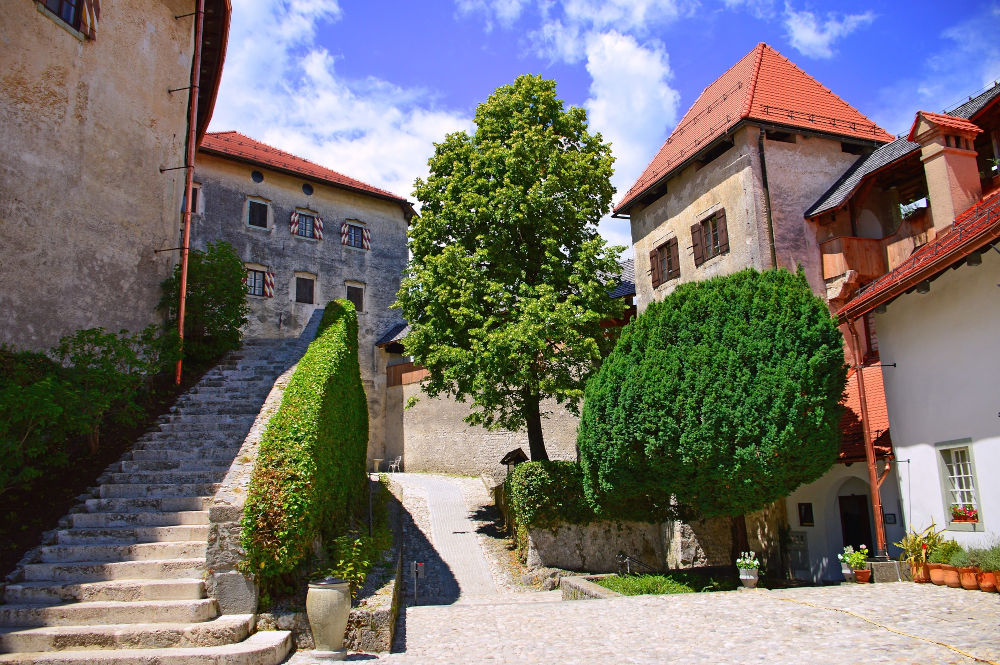
Above a mighty and dramatic cliff, Bled Castle has stood for more than a thousand years. This wonderfully gothic location could well be the set for a Dracula movie, even with a few resident bats after dark, however, the castle has a less macabre past. The castle was donated to the bishops of Brixen, and it was their residence for eight centuries. Today, as you step into the ancient courtyard after climbing the stairs, your breath is literally taken away and one can imagine its storied past.
Enjoy a drink in the courtyard before stepping into the Bled Castle Restaurant where local and regional dishes are made in a contemporary and sophisticated way with an aim to preserve the gastronomical heritage of Upper Carniola region and Slovenia. In 2022 Bled Castle Restaurant was awarded with one fork by international restaurant guide Falstaff.
Getting around Bled
Lake Bled is around 2km all the way around and it is possible to cycle around it and into the Slovenian hills for an adventure that tests your fitness. E-bikes are a wonderful invention and take out all the hard work when peddling uphill. You can enjoy a treasure hunt around Lake Bled, taking in all the important landmarks, and then stop for an exquisite lunch at Hotel Triglav, which overlooks the magnificent lake.
The sound of the holiday
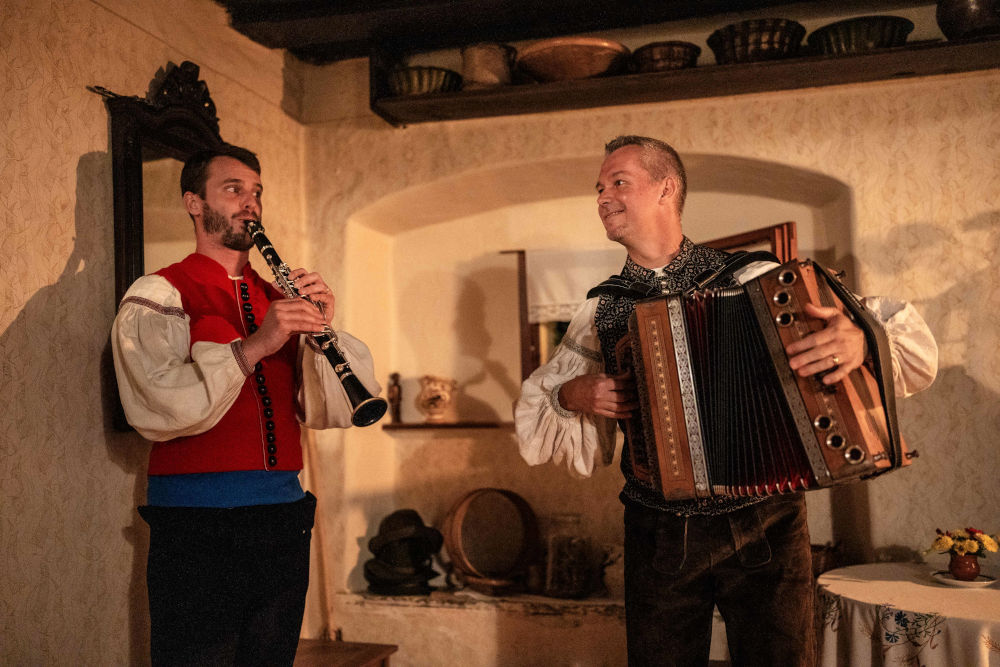
Experience true Slovenian hospitality as you travel back in time five hundred years to a traditional Bled homestead to see how festive seasons were celebrated in the Gorenjska region countryside. We arrived at a fabulous Slovenian cottage and were greeted by landowners dressed in traditional attire. As they invited us into their home, they played traditional folk songs and sang melodies showing us the intricate steps to dances to celebrate the upper Carniola festivities in their authentic homestead. We learned more about the lore of the land as we enjoyed an evening which was full of food, laughter, merriment and free-flowing Schnapps and wine.
As for the food we began with a traditional ričet, a hearty, traditional barley soup, that captures the warmth and flavours of this enchanting region, accompanied by bread and sausages. The room is kept warm by the huge oven which would be on all day baking the delicious Potica nut roll which is famous in the area. The meal was hearty and filling, but I needn’t worry about all the calories we consumed since the hosts whisked us off our feet for dances at frequent intervals, which included a hat dance as well as traditional routines. This is a wonderfully authentic experience that has won awards and is a wonderful way to discover the roots of this country’s rich heritage.
Experience the history and gastronomy of Radovljica
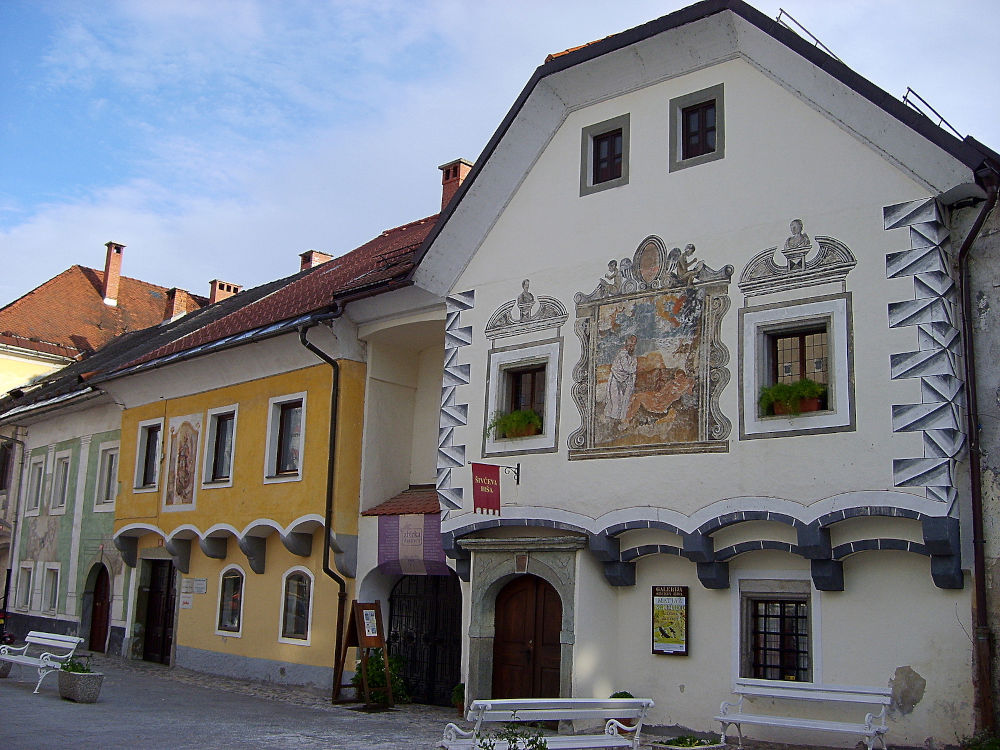
Continuing in tradition, just a stone’s throw from Lake Bled, is the charming Radovljica, a delightful Slovenian town with a chocolate box appearance and a sweet centre. It is a medieval city with Gothic, Renaissance and Baroque buildings interspersed with perfectly preserved traditional houses from the sixteenth, seventeenth and eighteenth centuries. Each of the traditional houses is adorned with a fresco paying homage to the protective gods to ward off fire.
As well as traditional houses and restaurants, there is a magnificent manor and even a Michelin-starred restaurant. There are also plenty of museums dedicated to beekeeping, alchemy and showcasing the town’s art collection. Linhart Square is the perfect venue for musical, cultural and culinary events and commands stunning views of the Sava River and the Julian Alps.
The town celebrates honey and is deemed to be the Slovenian capital of beekeeping, it was instrumental in kickstarting an international World Bee Day on May 20th each year. Children can set off on a fun adventure through the old town and solve puzzles along a trail to earn a sweet reward. There’s a 100-year-old family chocolatier called Radolska Cokolada, based in the heart of the old town centre of Radovljica, that produces and sells its own handmade chocolate. Watch the chocolatier at work and taste innovatively flavoured chocolates made to unique recipes. Visitors can enjoy guided tasting sessions, chocolate workshops and teambuilding sessions.
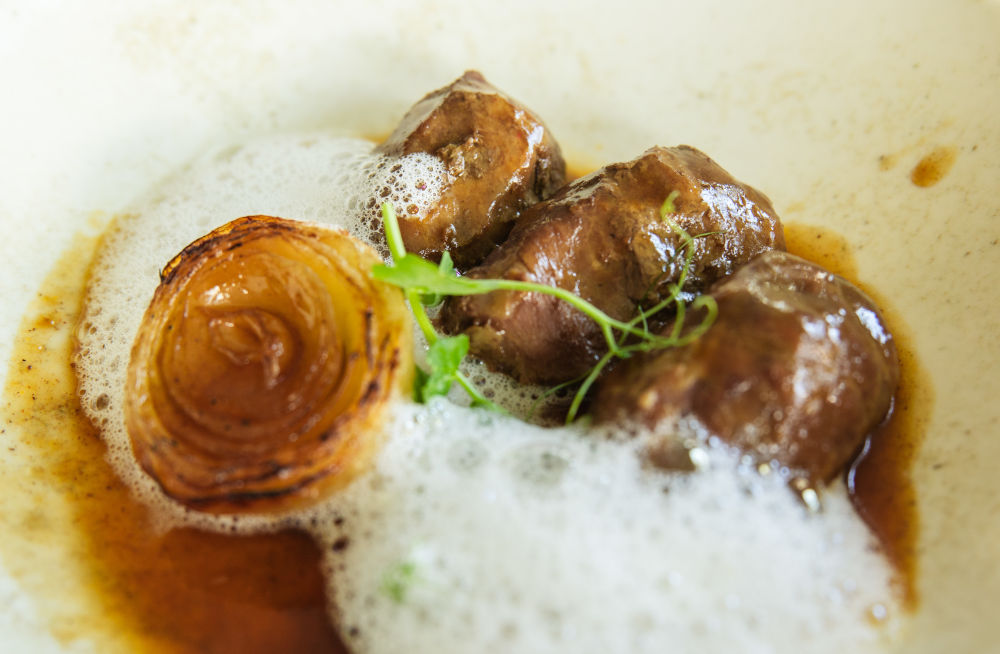
Guests visiting Radovljica can enjoy a chocolate tour in the company of four chocolate connoisseurs, which takes in a tour to the kitchen of the Michelin star chef Uros Stefelin at Hisa Linhart. There are also magical surprises at the Pharmacy and Alchemy Museum, Rodolska Cokolada and the Baroque Hall.
Gastronomy plays an important role across Slovenia and food is based on tradition and local ingredients which have received international acclaim by food critics. Several of Radovljica’s restaurants and special culinary experiences have been listed in the Gault & Maulau international culinary guide, while the likes of Vila Podvin is listed in the Michelin Guide. Indeed, Slovenia is renowned for its fine dining scene and has recently been awarded even more Michelin stars.
In a nutshell
Slovenia is blessed with green land, rich culture and fabulous heritage as well as a modern capital, yet it remains somewhat of a best-kept secret as people continue to flock to the Croatian coast, but it is easy to reach and explore. You can either fly with Ryanair into the capital of Zagreb in neighbouring Croatia and then drive over in less than an hour, or fly directly into Ljubljana with Easyjet from the UK. Slovenia has a sweetness that has remained constant in its location, its scenery and its people and it is an enticing destination that is great for a weekend break or a week away with the family.












